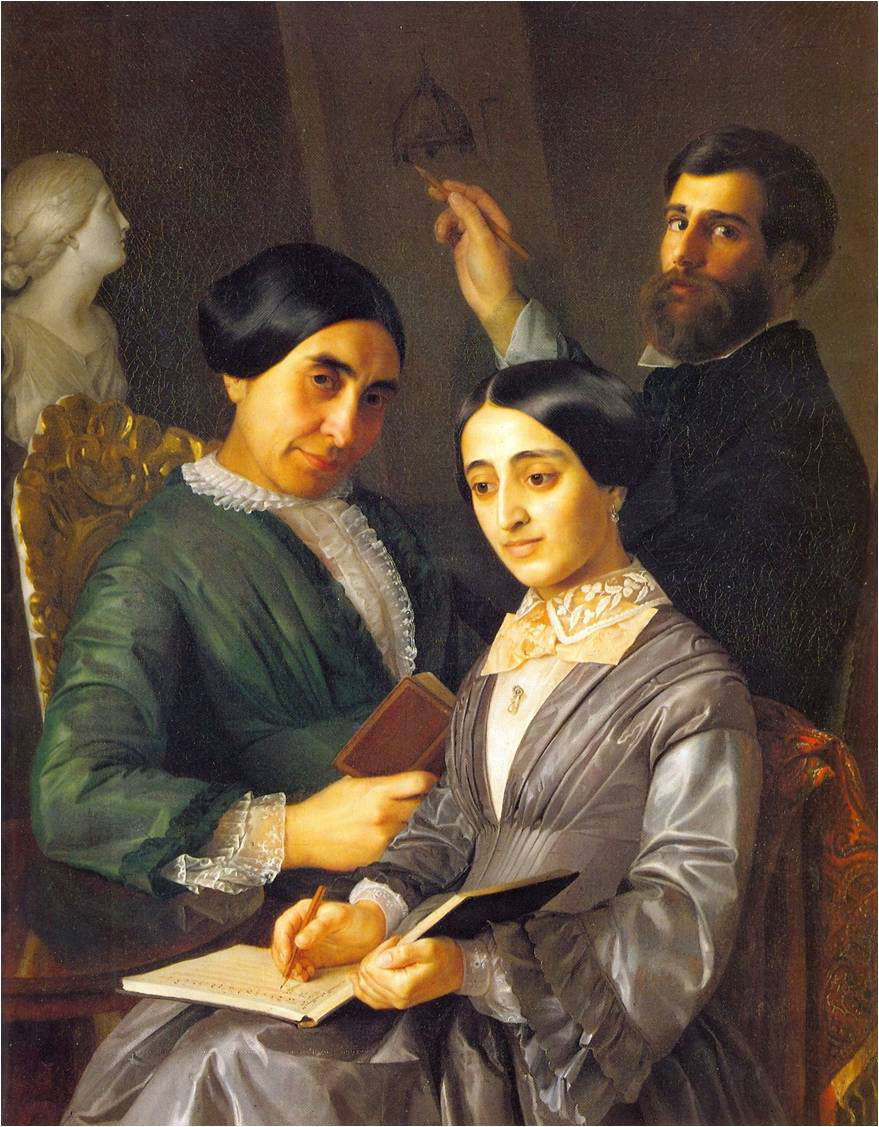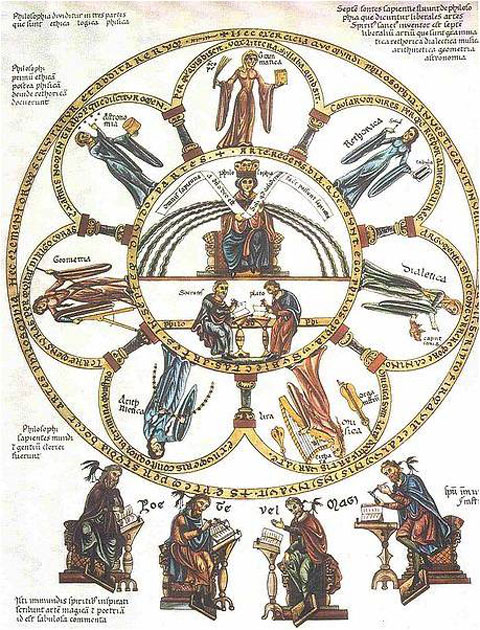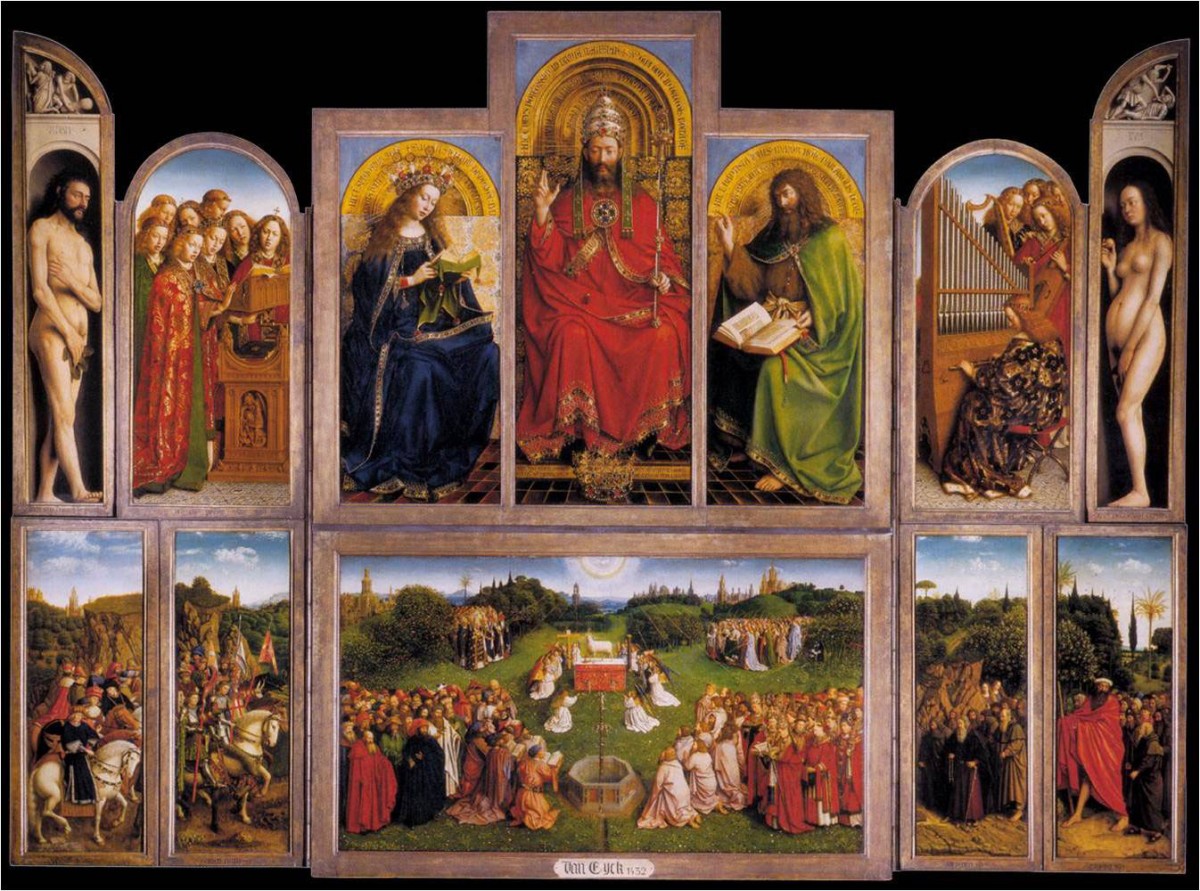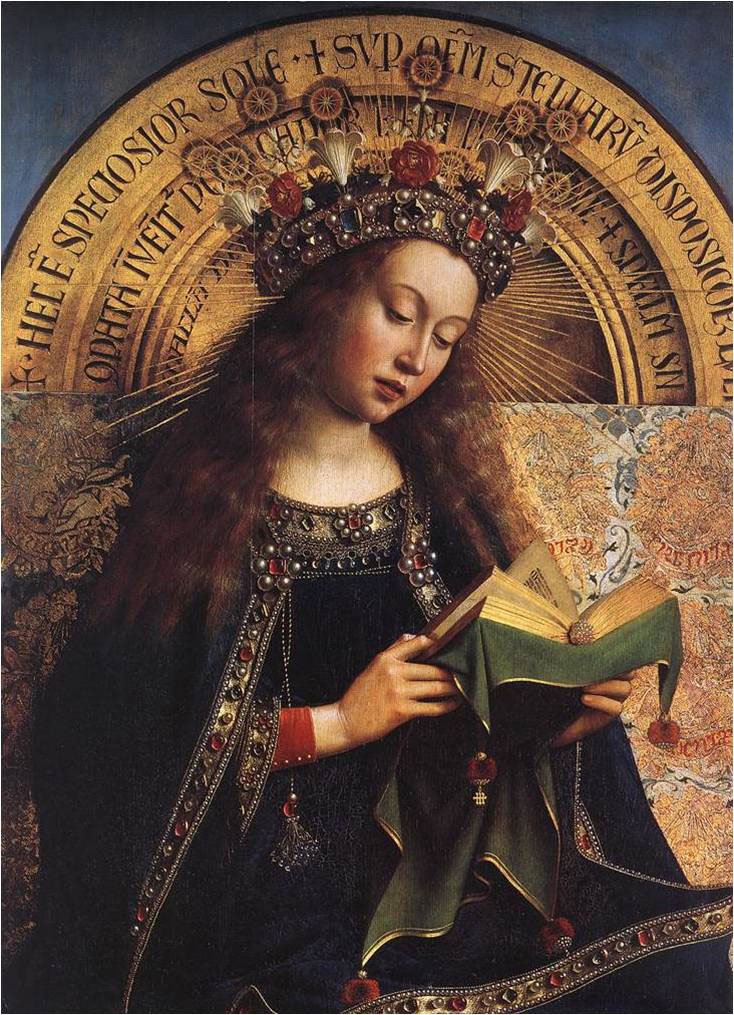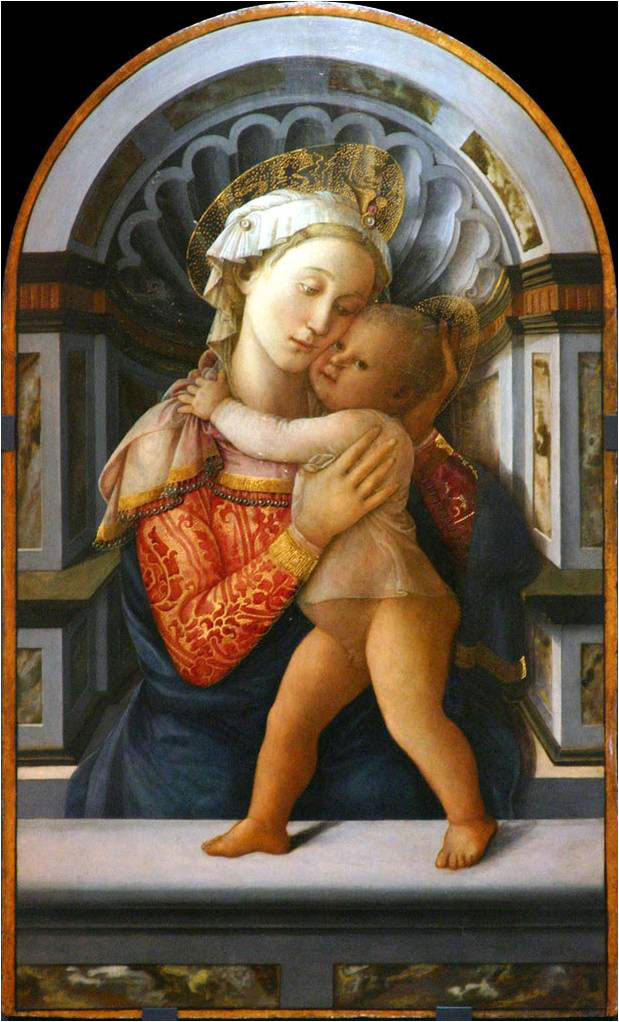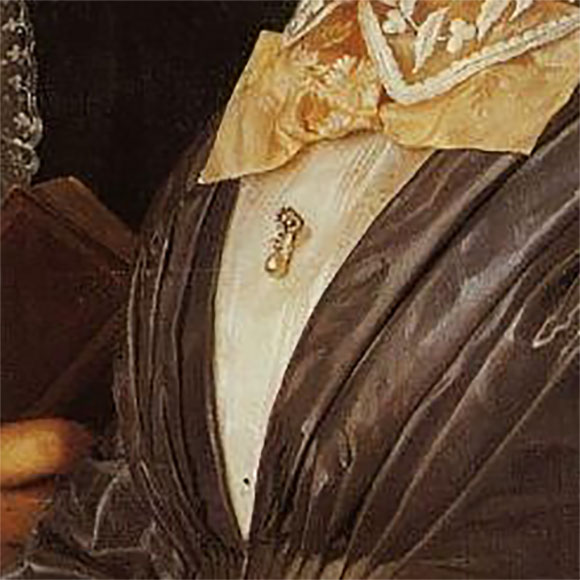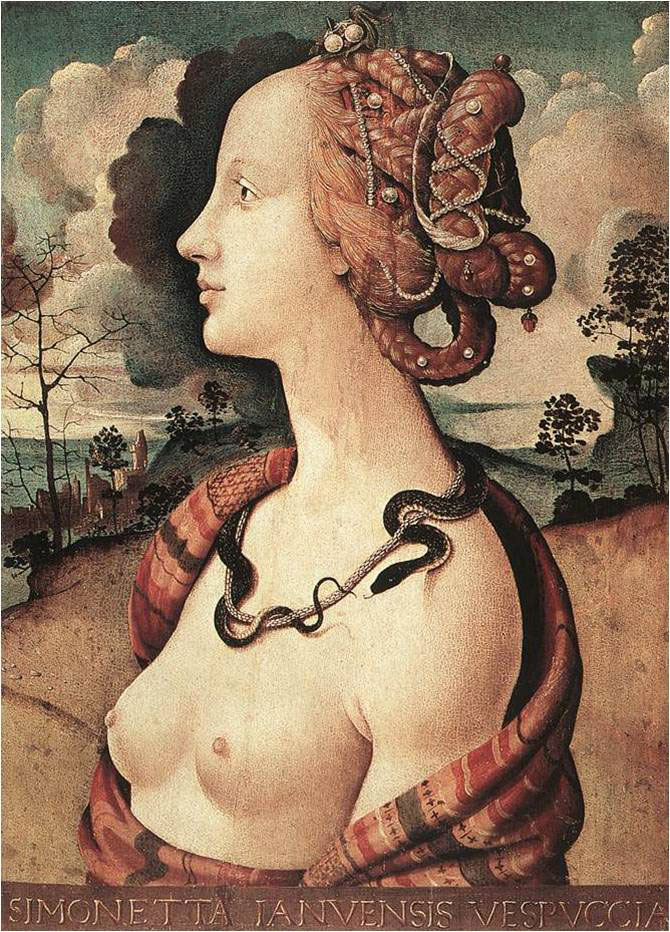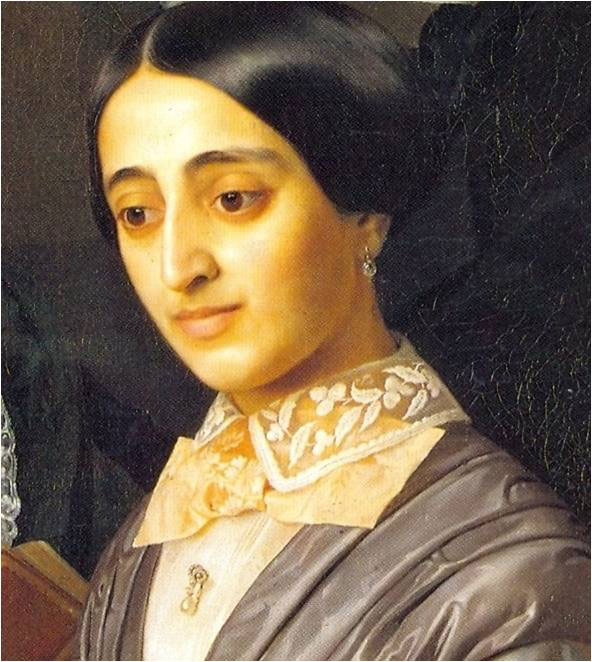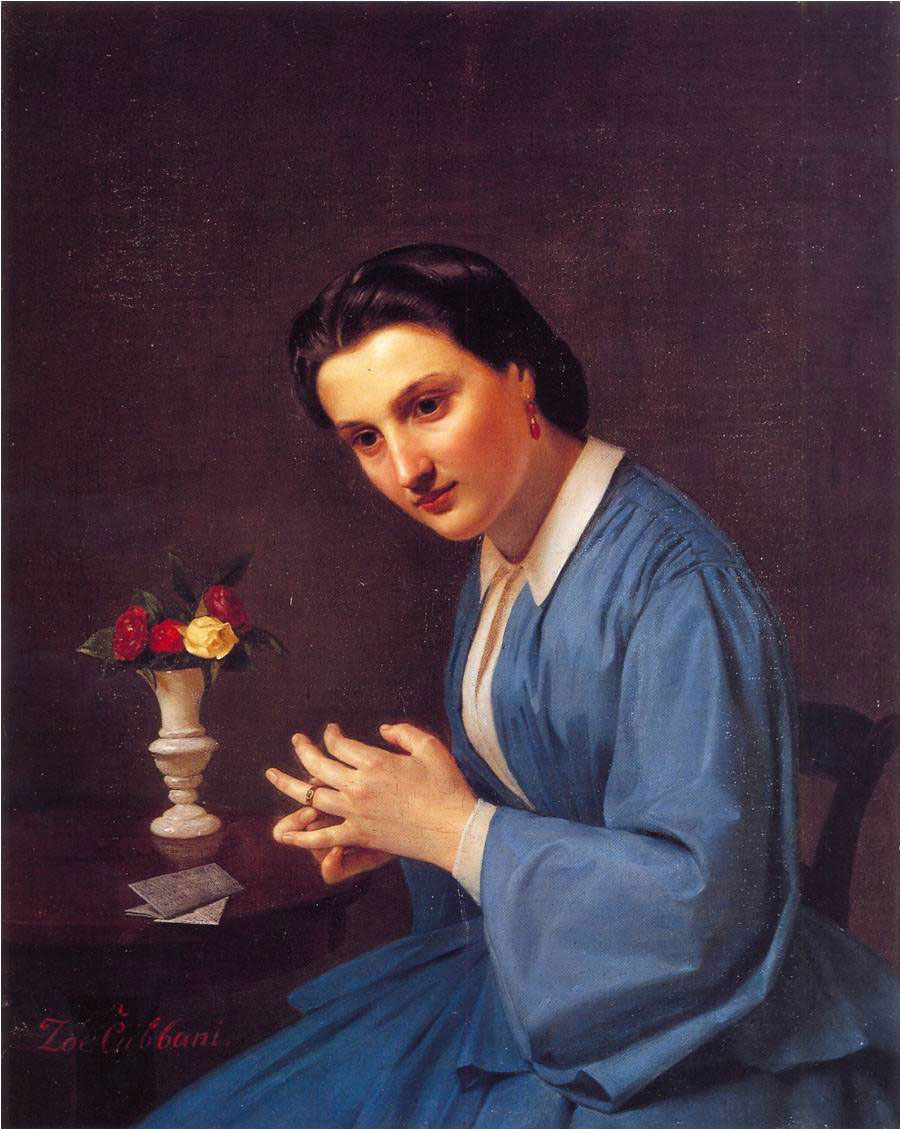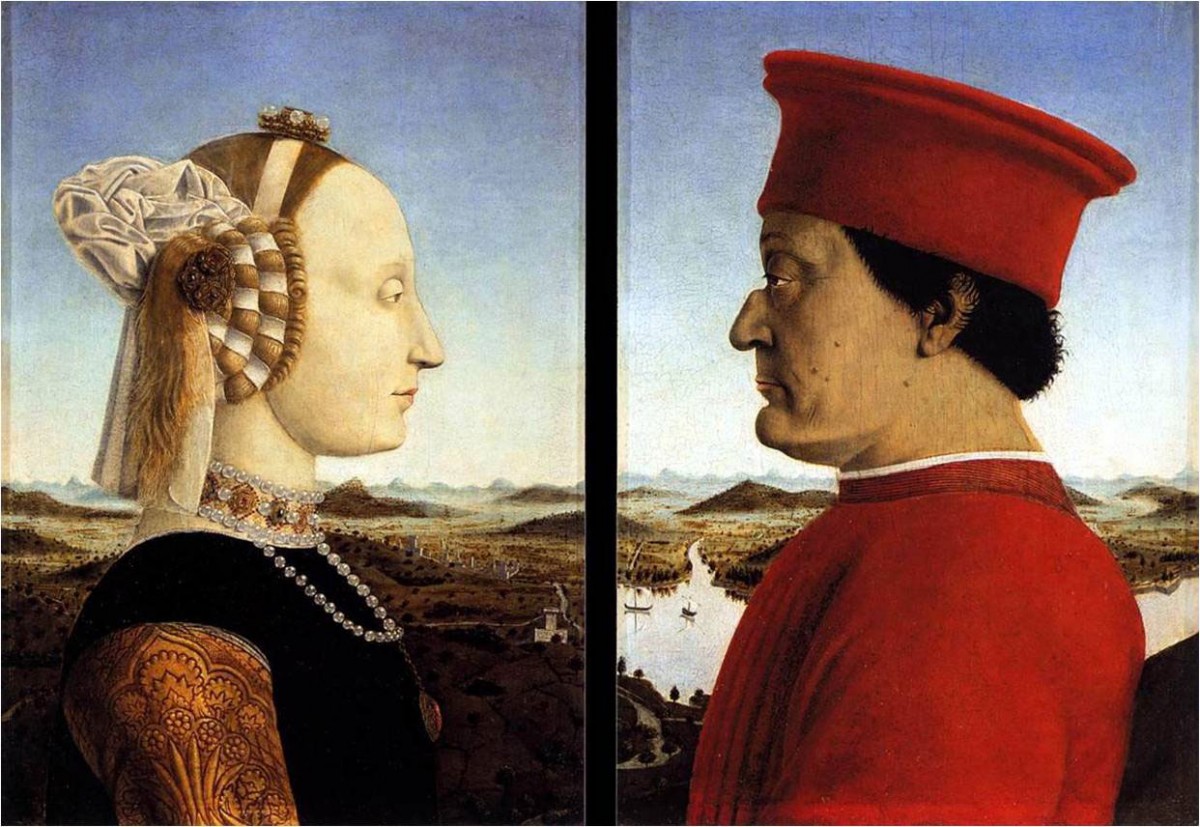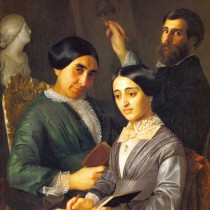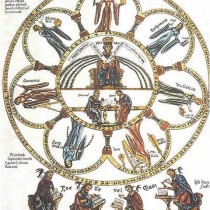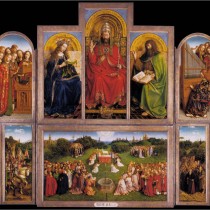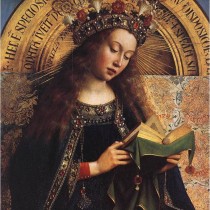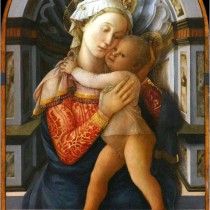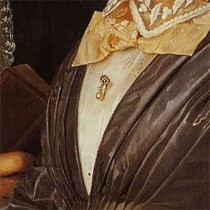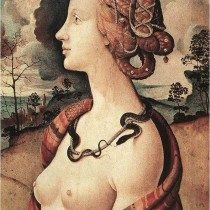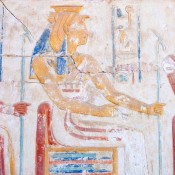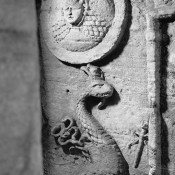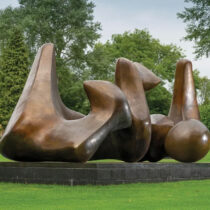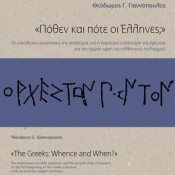If one had to save one painting by Nikolaos Kounelakis that bears his artistic imprint, in an imaginary ark with works of art, it would perhaps have to be “The artist’s family or an Allegory of the Fine and Liberal Arts” (c. 1864-1865), thanks to its particular psychographic nature and its intricate iconography (fig. 1).
If we did not know that the painter’s wife is depicted in the painting about six years after her death, the painting would only be an allegory of the arts and perhaps would not preoccupy us especially as a psychographic document. With this information, however, the painting acquires a new dimension, perhaps melancholy or macabre – while questions arise as to the composition’s semantics and the importance attached to it by the painter himself. The artist resorts to the use of symbols, speaking to us with sensitivity, in a complex, nuanced language.
Iconography (note 1) is the area of Art History that studies the recognition and identification of symbols, their description and interpretation and is applied in the visual arts. Its aim is to clarify each symbol’s conventional visual elements and its specific semantics (for example, the characteristic recognizable symbol of Saint Sebastian, is his depiction as a half naked young man pierced by arrows, as, respectively, the ointment jar is the iconographic symbol of Mary Magdalene). The soul does not think without images, as Aristotle remarked (On the Soul/ Περί ψυχής III, 431a, 14-17). From early on, art resorted to the creation of a visual vocabulary, where symbols suggest a meaning or are used euphemistically.
In order to interpret the iconographic universe of Kounelakis, it is necessary to first refer to his personal and artistic life. There are extremely few facts on the painter’s biography, which in several cases are undocumented. Nevertheless, it is certain he had a bond of deep love for his wife, proved by the manner her features are rendered in numerous portraits of his. He was born in Chania in 1829 (note 2). When he was twelve he sought refuge as an exile (note 3) with his family in Odessa in Russia. He studied painting at the Fine Arts Academy of St Petersburg where he distinguished himself, while in 1857, possibly influenced by the general trend of that period (note 4), he toured Italy for the first time. He ended up in Florence, which played a major part in his life, and where he lived for ten years. There, he closely studied the work of the Renaissance and Baroque Masters, completing his artistic education of the Petersburg Academy. While in Russia, he became acquainted with the work of academic painters, forming his personal language mainly influenced by the French school, showing a particular love for the work of Ingres the classicist. Equally important for his development was his contact with the idealist Romantic Movement which dominated official Russian painting and was expressed by artists such as Alexander Andreyevich Ivanov. Through Ivanov’s painting he encountered and became influenced by the art of the Nazarenes (note 5), a group of artists who revived religious art and was based on distancing itself from academism and emphasizing spirituality.
The artist will then create important works in Florence that are recognized (note 6) and, most importantly, he shall meet Zoe Kampani, the key to the painting we are examining in this article. The couple marries in 1858 (note 7) and a year later Zoe dies of tuberculosis. In 1867, the painter is already suffering from the same disease. He abandons Florence in search of a warmer climate and after a brief stop in Greece (note 8) he finally settles in Cairo where he dies two years later. The body of his work is made up of mythological and biblical themes, allegories, nudes, while portraits constitute its main part (note 9).
The researcher of this painter urgently needs to place him within a set of specific social and personal data, in order to interpret it precisely and objectively. However, until more detailed facts on his life come to light, our judgments will remain associative and subjective in the hope they are reasonably accurate.
There is very little about the artist’s personality we can discuss with certainty and this also applies to his paintings, many of which we still cannot safely authenticate. His works that are certified as authentic are no more than 30, but there are others attributed to him. The only ones we know for certain are authentic, are those with the following inscription handwritten in Italian by his mother in law, on a piece of paper stuck on the back side of the canvas: “Del defunto Niccola Kunelaki/ sua suocera Eufemia Cabbani/ 1869” (“by the deceased Niccola Kunelaki /his mother in law Eufemia Cabbani/ 1869”). Most probably his mother in law herself sent or brought some works of Kounelakis to Athens, validating their authenticity with this inscription (note 10).
The work in the National Gallery is the first humanist allegory in Modern Greek painting (note 11). “The painter lived in the town of Florence, where echoes were still heard of a centuries long literary discussion on the topic of the equal value of the Fine and Liberal Arts. Did Fine Arts have the right to be under the same roof as the Liberal Arts?” (note 12) (fig. 2). For many centuries, from the time of Plato and Aristotle up to the Renaissance, the separation of the arts was done based on the fulfilling of material or spiritual needs. Painters, sculptors and architects were considered as craftsmen and their activities were not spiritual (note 13).
Kounelakis replies to the ancient question on the equal value of the arts, by depicting allegories of crafts together with the fine arts, as proof of both his own humanist spirit and that of the city hosting him, counter signing Leonardo’s belief that painting is “una cosa mentale”. The allegories of poetry and painting ,his mother in law and the artist, are on the same visual level, reminding us of Horace’s saying (note 14) “ut pictura poesis” (as is painting, so is poetry), one more reference to their equality and the banning of the old prejudice.
An iconographic approach
Kampani is depicted as the personification of Music, as seen from the note book with a stave on which she is writing notes, her mother personifies Poetry since she holds the typical small poetry book and the artist who paints the dome of the Florence Cathedral symbolizes Painting. Simultaneously, he refers to the city he had lived in, the birthplace of the Renaissance, of allegorical forms and Humanism, while the Cathedral marks the art of Architecture. There is also the marble bust of a Muse, referring to the art of Sculpture. An imaginary inverted pyramid is created, with its base formed by the heads of the Muse and the painter and its top by the figure of Kampani. She is the focus point, this being further emphasized by her being more strongly lit and by the colour of her gown, which exerts an almost magnetic effect on the viewer. The painting’s equilibrium is disrupted in her favour and the viewer’s attention is distracted. The deceased spouse and the theme of death preoccupy the painter who can be distinguished, almost concealed, behind the dominant form of his wife.
Pinned to her breast is a pearl brooch which is a traditional reference to the kingdom of heaven and eternal life. In the Gospel according to Saint Matthew, Paradise is compared with a priceless pearl (note 15). In Renaissance paintings, pearls also have a Mariology character and are associated with the immaculate conception of the Virgin who is often depicted wearing them, as for example in the Ghent polyptych by Van Eyck (figs. 3, 4), or in the painting by Fra Filippo Lippi at the Palazzo Medici Riccardi (fig. 5), where reference is made to the Virgin’s attribute as the Queen of Heaven (“Regina Coeli”). Pearls adorned brides and newlywed women, as was Zoe Kampani, who had been married for just a year.
Looking more carefully at the brooch, we realize there is a snake on the pearl (fig. 6). Kounelakis who was broadly educated, uses the language of symbols and creates a personal emblem that again sends out the message of immortality. The Humanists of the Renaissance shaped their allegorical language influenced by books such as the “Hieroglyphica” by Horapollo, the “Emblemata” by Andrea Alciati or the “Iconologia” by Cesare Ripa. The artists searched through these for cryptic symbols and complicated allegories for their works, so as to charge each small detail with a meaning. These hieroglyphic shapes, in their literal sense of the sacred writing, that detached them from the Egyptian vocabulary of forms, promised the Humanists the decoding of the ancient wisdom or, Sapientia Veterum, bequeathed to them by previous generations in the shape of symbols so as not to be desecrated. Humanist thought enriched the ancient symbols with others from Christianity and in many paintings the result is so complicated, as to become incomprehensible to us of the modern era who are unfamiliar with such allegorical metaphors.
In classical antiquity the snake, especially the one swallowing its tail, symbolized eternity and was associated with Janus (note 16), the Roman god linked to each beginning, to the New Year and guardian of public thoroughfares and city gates. In the painting by Piero di Cosimo “Simonetta Vespucci” (fig. 7), the beautiful Simonetta, mistress of Juliano Medici, is depicted with a snake coiled round her neck, while at the bottom of the painting is an inscription linking her to the Roman god. The epithet “Ianensis” means “she who belongs to Janus”. The god was also associated with death as a transition, a passage and the start of a new existence. The complex humanist iconography of Piero di Cosimo’s work, inspired by the snake’s hieroglyphic symbolism, may have influenced Kounelakis in his choice of an unusual piece of jewellery for his wife. The fact that the beautiful Simonetta died very young of tuberculosis at the age of just twenty two, also favours this hypothesis.
The lace collar on Kampani’s dress (fig. 8) has myrtle berries embroidered on it, a plant associated since antiquity with Aphrodite and enduring love. It is an evergreen related to immortality and eternity. In classical literature it was named “Myrtus Coniugalis” and associated with conjugal love (note 17). The painter chooses to adorn the throat of his wife with this motif. He paints a tight collar and under it he ties a scarf, creating a suffocating image, a metaphor perhaps of his wife’s difficulty in breathing, caused by tuberculosis.
Her features are shown as having deteriorated through the illness. She barely reminds us of the artist’s young and beautiful betrothed, in the painting by that name (note 18) of about 1862 (fig. 9). If we accept as accurate the references to her date of death and that of the painting, she has been depicted posthumously and perhaps as a votive work. If this is the case, his wife’s gradual collapse and the climax of the nightmarish ordeal of her death are facts that are still very fresh in the painter’s memory. Perhaps Kounelakis is in denial and that is why he depicts her as healthy, not wishing to accept the reality of her death, hinting only at a sign of uneasiness on her face, an ugly omen, while she gazes ahead unseeingly, slipping her engagement ring on her finger. In the “Allegory of the Fine and Liberal Arts” it is clear she is ailing and this, primarily, is a manifestation of the emotional state of the painter himself.
The idea of the posthumous portrait dates back to antiquity. Precursors of painted depictions of the dead are wax death masks by the Egyptians, the Romans, as well as the Fayum portraits, the difference being that the latter were painted when the sitter was still alive. The most well know example of a posthumous portrait from the Renaissance, is the one by Piero della Francesca of Federico da Montefeltro and his wife Battista Sforza (fig. 10), in which she is dead but is depicted “alive” with her living husband.
Zoe Kampani’s personification as Music, rather than as some other art, has a special meaning. The painter chooses it because of music’s immediacy and our inability to capture its meaning in words. Music reaches the “preverbal levels of human memory and recalls the earliest forms of experience” (note 19). Just as we can only describe it and its essence evades us, so is the painter’s grief deep and impossible to describe in words.
Since the turn of the last century, many studies have been made that link music to psychology and even more specifically to the expression of mourning. Theodor Reik, one of Freud’s first students, believed that music can help a person express his/her feelings (note 20). According to him, a melody can convey an emotion much better than words. “Music is the art that literally renders the material incorporeal … With the ear as receptor, the art of tones, without being representational, creates worlds that effect the heart as much as the mind, evoking situations that do not fail to move human beings” (note 21). In cases of bereavement or traumatic experiences, music has the ability to bring grief to the surface and offer consolation at the same time. Perhaps, in her note book, Zoe Kampani is writing the notes of a piece loved by them both, a melody that will always remind the artist of his wife.
It seems obvious that the artist himself should be the personification of Painting, however it does take on a further significance, when we consider the word’s etymology in Greek. Zographiki (Zωγραφική) means the depiction of life and in some sense its preservation, its victory over the natural decay of everything.
Kounelakis not only created a humanist type of allegory, but also a complex multilayered approach to parting through death. He transforms this sad experience into a promise of immortality and memory, focusing on the power of art to contribute therapeutically in managing the loss of his beloved wife, as well as the fear of his own death. “The reason eros was one of the greatest sources of inspiration is because when it encounters obstacles, either from difficulties in life or from the death of a beloved wife, it creates in man’s soul those painful situations that urge him to sink into the deepest layers of himself and raise the problem of actual existence with all its agonizing questions, using his imagination in a piece of work, for all his feelings to materialize” (note 22). The painter soberly accepts his wife’s unexpected loss and at the same time his own imminent death. Perhaps he already knows he is suffering from tuberculosis and if not, at least he becomes aware of his own finite existence through the death of his wife.
Thus his depicting himself as Painting personified, acquires the meaning of immortality and the preservation of his and his wife’s memory. At the same time, a message is communicated regarding the therapeutic function of painting and, by extension, of music as an ark for the preservation of memory.
The work’s iconography, its subtle but important details, prove not only the artist’s education and talent but the power of painting as a carrier of psychographic dimensions and an aid to each healing process. Reading the symbols in the work is interesting both in terms of Art History and therapy through this. Besides, “vision as an activity falls entirely within the psychologist’s realm and no one ever discussed creative processes or the experiencing of art without the use of psychology” (note 23). Awareness of mortality has preoccupied man through time, creating the need in him sometimes to understand and come to terms with the certainty of death, at other times to exorcise the anxiety and terror it creates in him, or even death itself. Since antiquity he has written about death, lamented, sang, carved and painted it. In Universal mythologies and cosmogonies, death always holds a key position, sometimes perhaps even more important than life itself.
In Kounelaki’s work, the painted surface becomes the point of separation from death and decay, it is transformed into an environment that is not emotionally charged, becoming the artist’s personal “memorial” and his reconciliation with his wife’s loss through its suggested interpretation.
Dr Maria Athanasekou
Art Historian
